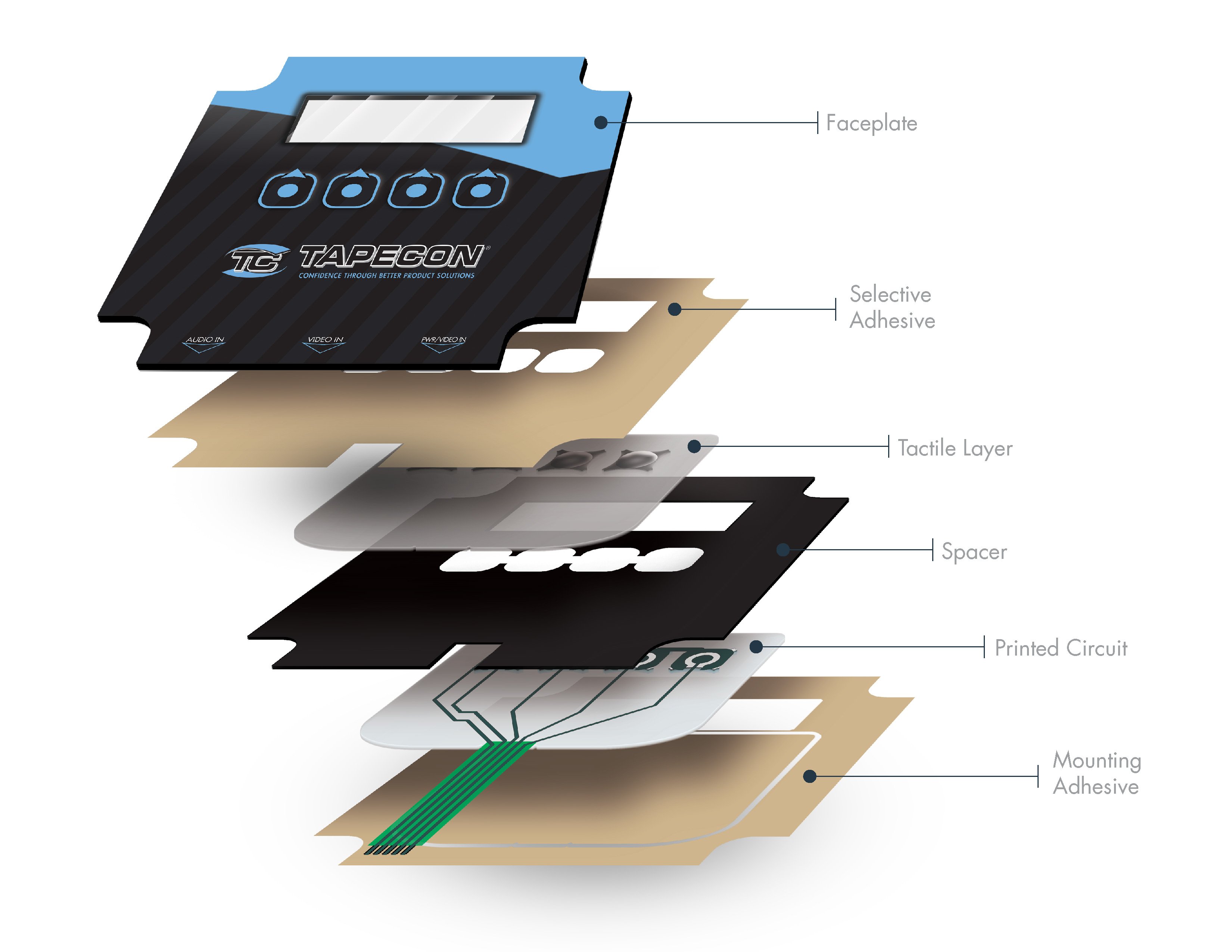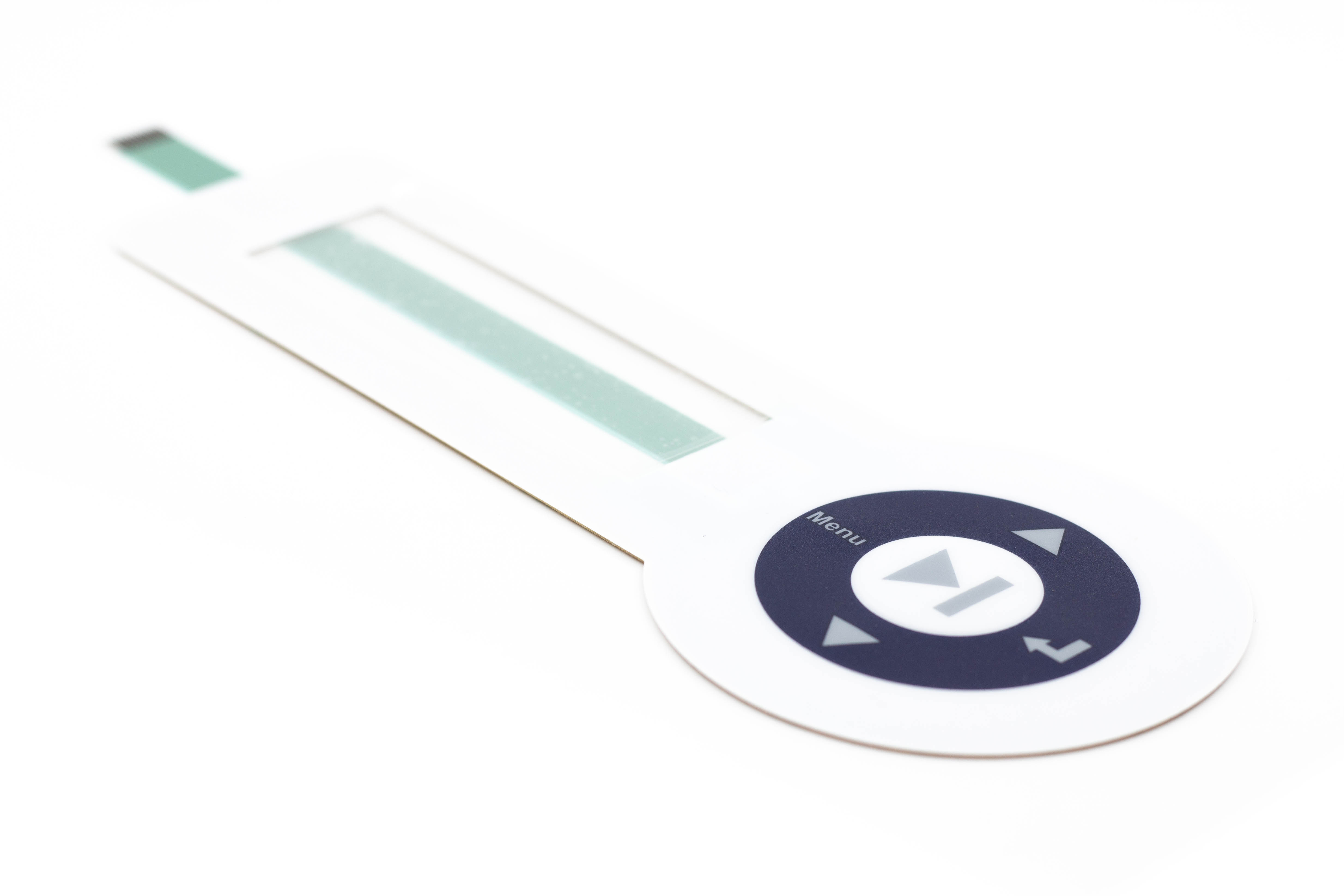The Manufacturing Refine Behind Membrane Switch Over: What You Need to Know
The production process behind membrane switches combines cautious layout, material option, and quality assurance. It starts with understanding the details of membrane button layout and advances via various phases, consisting of material selections and printing techniques. Each phase plays an important duty in ensuring performance and durability. The intricacies of layer building and construction and the rigorous testing requirements might disclose insights that are not right away noticeable. What exists past these foundational components?
Comprehending Membrane Switch Style
Membrane layer buttons might show up straightforward at initial look, their layout involves intricate considerations that guarantee functionality and resilience. The style process begins with a complete understanding of individual demands, consisting of the interface's intended application and environmental factors. Ergonomics is an essential element, as the layout must facilitate convenience of usage while making sure that responsive comments meets customer expectations.Moreover, the layering of parts, such as visuals overlays, sticky layers, and conductive traces, should be precisely crafted. membrane switch. This layered arrangement not just influences the switch's responsiveness yet additionally affects its durability. Attention is offered to the securing methods employed to shield versus wetness and dust, which can jeopardize performance. In addition, style considerations encompass appearances, where color design and aesthetic clearness enhance customer experience. Eventually, the layout of membrane layer switches equilibriums performance, customer experience, and toughness, guaranteeing that they fulfill the demands of various applications successfully
Materials Made Use Of in Membrane Switch Over Manufacturing
When picking materials for membrane layer button manufacturing, it is vital to consider both efficiency and sturdiness. The primary materials consist of polyester and polycarbonate films, which give flexibility and stamina. These movies are typically covered with adhesive to assure proper bonding to substrates. Conductive inks, usually composed of silver or carbon, are critical for creating electric connections within the switch, permitting for reputable operation.Additionally, a safety layer, such as a hard coat, is regularly related to enhance scrape resistance and long life. The choice of backing material, such as acrylic or foam, can substantially influence the switch's tactile feeling and total user experience. Different ecological variables, consisting of temperature level and humidity, should direct material choice to ensure peak efficiency in details applications. Inevitably, the right combination of materials adds to the membrane switch's functionality and lifespan, making informed choices important for producers.
The Printing Process: Creating Graphics and Text
The printing process in membrane switch manufacturing plays a significant duty in generating high-quality graphics and text. Numerous visuals layout methods are utilized to ensure visual appeal and functionality, while mindful ink option techniques are necessary for toughness and efficiency. Comprehending these elements is fundamental for attaining ideal lead to membrane button layout.
Graphic Design Techniques
Graphic layout methods play an important duty in the printing procedure of membrane buttons, as they define just how graphics and text will inevitably appear on the final item. Effective visuals design entails the tactical use formats, shades, and font styles to enhance readability and aesthetic allure. Designers often use vector graphics for scalability, ensuring that pictures continue to be sharp at various sizes. Furthermore, attention to contrast and alignment is essential, as it influences individual communication and aesthetic quality. The unification of branding elements, such as logos, need to be handled with like preserve brand name integrity. In general, thoughtful visuals layout techniques contribute substantially to the capability and beauty of membrane buttons, influencing user experience and product performance.
Ink Choice Approaches
Picking the appropriate ink is vital for attaining the wanted aesthetic quality and resilience in membrane button manufacturing. Numerous ink kinds are made use of, consisting of solvent-based, water-based, and UV-curable inks. Each kind offers distinct qualities, such as versatility, bond, and resistance to environmental elements. Solvent-based inks are typically preferred for their toughness and lively colors, while water-based inks are much more ecologically friendly but may have constraints in attachment. UV-curable inks supply fast curing and robust efficiency. In addition, shade matching methods guarantee that the selected inks straighten with layout specs. Eventually, the choice of ink must take into consideration aspects such as application technique, substrate compatibility, and end-use needs to attain remarkable cause membrane layer button graphics and text.
Layer Construction and Setting Up

Product Option Refine
A mindful option of products is crucial in the production procedure of membrane layer buttons, as it straight affects performance and toughness. The main products utilized include polyester, polycarbonate, and different conductive inks. Polyester is typically favored for its outstanding resistance to chemicals and abrasion, making it appropriate for severe environments. Polycarbonate, on the other hand, provides superior quality and influence resistance, which is helpful for applications calling for exposure and toughness. Conductive inks, generally made up of silver or carbon, are crucial for producing trusted electrical paths. Additionally, the choice of glue products affects the overall honesty of the button - membrane switch. Assessing factors such as ecological direct exposure, tactile responses, and visual demands guides suppliers in selecting the very best materials for their certain applications
Layer Bond Techniques
Sticking layers in membrane button building is an important procedure that ensures functionality and durability. Various attachment methods are used to protect ideal bonding in between layers, which generally consist of making use of adhesives, warmth, and pressure. Pressure-sensitive adhesives (PSAs) are generally used for their convenience of application and instant bonding capacities. Furthermore, thermal bonding strategies can be applied, where warmth is used to trigger adhesive properties, protecting a solid bond. The choice of bond method mostly relies on the materials included and the details application requirements of the membrane layer button. Proper positioning and consistent application of adhesives are important to stop defects, securing the button runs effectively throughout its designated life expectancy.
Quality Assurance Steps
Ensuring quality assurance throughout the layer construction and assembly of membrane layer buttons is essential for maintaining performance and dependability. This procedure typically involves a number of important actions, including comprehensive evaluations at each go to website phase of manufacturing. Suppliers utilize advanced testing techniques, such as peel examinations and bond evaluations, to validate the honesty of layer bonds. In addition, aesthetic examinations are performed to recognize any kind of issues in printing or product incongruities. Ecological problems, such as temperature level and moisture, are very carefully kept an eye on to ensure suitable treating and adhesion. Furthermore, regular calibration of equipment aids keep exact manufacturing requirements. By executing these quality control measures, suppliers can substantially lower the threat of product failure, assuring that the last membrane switches fulfill the needed specifications and consumer expectations.
Testing and Quality Assurance Procedures

Advancements in Membrane Change Innovation
As innovations in technology remain to evolve, membrane buttons are taking advantage of ingenious advancements that boost their functionality and customer experience. One significant development is the assimilation of capacitive touch modern technology, which permits for more intuitive and receptive interface. This shift not just enhances aesthetics but also decreases mechanical damage, prolonging the life expectancy of the switches.Additionally, advancements in visuals overlay materials have actually brought about improved longevity and resistance to environmental factors such as moisture and UV light. These products now use improved clarity and illumination, further elevating the aesthetic appeal.Furthermore, the consolidation of wise innovation is changing membrane layer switches over right into interactive control panels, enabling connectivity with IoT devices. This connectivity promotes a seamless user experience, leading the way for applications in numerous sectors, from medical care Discover More Here to consumer electronic devices. Collectively, these developments placement membrane layer changes as critical elements in contemporary device style.
Frequently Asked Questions
The length of time Does the Membrane Layer Change Manufacturing Process Take?
The period of the membrane layer switch production process can Continue vary significantly. Aspects such as intricacy, materials used, and manufacturing quantity influence timelines, with regular manufacturing varying from a couple of days to numerous weeks for completion.
What Are the Typical Applications for Membrane Switches?
Membrane layer switches are generally made use of in various industries, consisting of automotive controls, home home appliances, medical tools, and customer electronic devices (membrane switch). Their convenience and sturdiness make them ideal for applications calling for easy to use interfaces and trusted efficiency in varied atmospheres
Can Membrane Switches Over Be Customized for Certain Demands?

What Is the Life-span of a Typical Membrane Layer Switch?
The life expectancy of a normal membrane layer switch differs, but typically, it ranges from 1 to 5 million cycles. Variables such as usage, setting, and material high quality significantly influence resilience and total efficiency with time.

Are Membrane Layer Switches Eco-friendly?
The ecological kindness of membrane layer changes varies. Some materials utilized might not be recyclable, while others can be eco-friendly. The total influence depends upon making techniques and products, necessitating careful consideration during selection and disposal. The production procedure behind membrane switches combines mindful design, product choice, and quality control. It starts with recognizing the ins and outs of membrane layer switch design and advances via various phases, including material options and printing strategies. When picking materials for membrane button production, it is essential to contemplate both performance and sturdiness. A cautious option of materials is crucial in the production process of membrane buttons, as it directly affects performance and sturdiness. The option of adhesion approach largely depends on the products entailed and the specific application demands of the membrane switch.